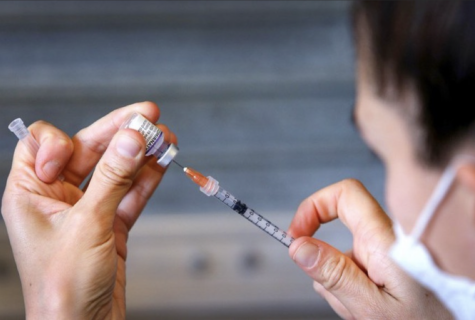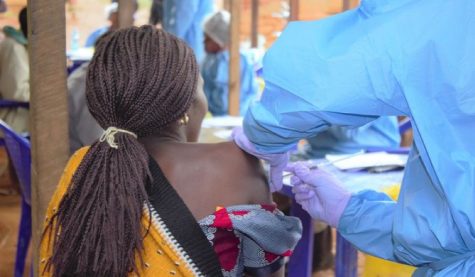Australian Approach Shows COVID-19 Conditions Will Be the New Normal
On Oct. 1, Australia’s Prime Minister Scott Morrison announced the reopening of Australian borders and the abandoning of a “Zero-COVID” policy. Many countries, including New Zealand, China and Taiwan are no longer focusing on complete eradication of the virus; rather, they are learning to live with it. Due to the virus’s contagious nature, the lack of global cooperation and overall restlessness, other countries will soon need to shift their COVID-19 approach from combative to adaptive. The complete eradication of the virus is unlikely at this point. World leaders need to shift their perspective to a more lenient one so we can finally approach a “new normal.”
Australia’s approach to combating the spread of the virus originally included strict lockdown and quarantine measures, closed borders, robust contact tracing systems and extensive testing. These measures left thousands stranded overseas, with a lucky few able to return home after having to undergo a strict quarantine period. Australia has also been encouraging vaccinations: 55% of the country is fully vaccinated and close to 80% have received the first dose. Even so, Australians could not completely eliminate the virus.
With the emergence of the Delta variant, which is more than two times as contagious as previous variants, many countries are abandoning the idea of living in a completely COVID-19 free world again.
On Oct. 4, New Zealand announced that they would no longer prioritize eliminating all coronavirus cases. “Elimination was important because we didn’t have vaccines. Now we do, so we can begin to change the way we do things,” said New Zealand’s prime minister Jacinda Arden.
World leaders are starting to realize that COVID-19 is becoming a fact of life that we need to learn to live with. Swift eradication of COVID-19 is extremely unlikely due to the virus’s chemical makeup and the varying national responses to the pandemic.
The American Society of Microbiology describes four criteria that indicate whether a disease can be eradicated, using the smallpox virus as an example. The first question posed is whether or not the virus can be easily identified. Smallpox was easily diagnosable from red blisters that would appear on a patient’s skin. With COVID-19, some patients are asymptomatic, which makes it difficult to quickly isolate cases. Around 35% of assessed COVID-19 cases have been asymptomatic, according to a study from the Proceedings of the National Academy of Science (PNAS). The ability to quickly identify and isolate cases is crucial to containment; unfortunately, the amount of asymptomatic cases makes this a difficult feat.
The second question is whether the virus can spread to non-human species. If the disease can be transmitted among humans and other animals, animals can easily reinfect human populations, regardless of human efforts. This is clearly the case with COVID-19, as many wild and domesticated animals became infected starting in 2020.
The third question is whether the disease is geographically restricted. Increased globalization and the reopening of international borders will only hinder the fight for containment.
Finally, the American Society of Microbiology looks to determine if there is a vaccine or another way to minimize transmission. However, we must remember that vaccination is only effective as a means of eradication if a large enough proportion of the population gets vaccinated. As of Oct. 13, 48.9% of the global population has received at least one dose of a COVID-19 vaccine. Over half of the global population remains extremely vulnerable to contracting and spreading the virus. It seems like herd immunity will not be achieved anytime soon.
Mutation is also a factor preventing the complete eradication of COVID-19. The more a virus spreads, the more likely it is to mutate and for those mutations to survive in a population. Scientists estimate that a new coronavirus mutation establishes itself in a population roughly every 11 days. Mutations can increase the virus’s transmissibility and cause more severe symptoms, as shown by the Delta variant. These mutations can make vaccine development more difficult.
“All RNA viruses mutate over time, some more than others. For example, flu viruses change often, which is why doctors recommend that you get a new flu vaccine every year,” explains Dr. Robert Bollinger. RNA viruses like COVID-19 will inevitably mutate; the question remains whether our vaccines will be able to combat new variants.
Our world of international travel and interconnected global economies makes it difficult to completely shut off country borders like Australia tried to do. Controlling a virus like COVID-19 requires united international cooperation. The CDC’s strategy aimed to limit transmission and minimize the impact of the virus while other countries, like Australia, opted to tackle the challenge of completely eradicating the virus. Some countries used tedious and widespread contact tracing to control the spread, but others were too large or disorganized for this method.
There has also been disagreement about how to handle the virus within countries. In the US, for example, advocacy for preventative measures like wearing masks and vaccines has been blocked by conversations about freedom and individual rights. Some argue that they have the right to choose whether they want to wear masks or get vaccinated. Opposing arguments emphasize that preventative measures save other people and even point out the double standards inherent in supporting bodily autonomy for vaccination, but not for abortion. Tensions are only becoming further polarized, making it more difficult to reach compromise. We need international as well as intra-national cooperation to control the spread of the virus.
The last obstacle to completely eradicating COVID-19 is human frustration; people are tired of being in a pandemic. Most people have been in and out of lockdowns for over a year and a half. People are tired of wearing masks and quarantining and crave the normalcy of 2019. So when US cases spiked in January, April and August of 2021, many didn’t revert to lockdown routines despite record-breaking cases. The US government might have updated vaccine protocols, like enforced mask mandates, but the general response never reached the original intensity of the March 2020 lockdown. Politicians likely realized that citizens would not return to complete lockdown without a fight.
Eradication of COVID-19 is extremely unlikely, and countries abandoning their Zero-COVID policies is how we can reach our new normal. Australian Prime Minister Robert Morrison says, “Australia can live with this virus,” and that is exactly what we’re all going to have to learn to do.
Ava Knight, FCRH ’25, is an integrative neuroscience major from Seattle, Wash.















































































































































































































